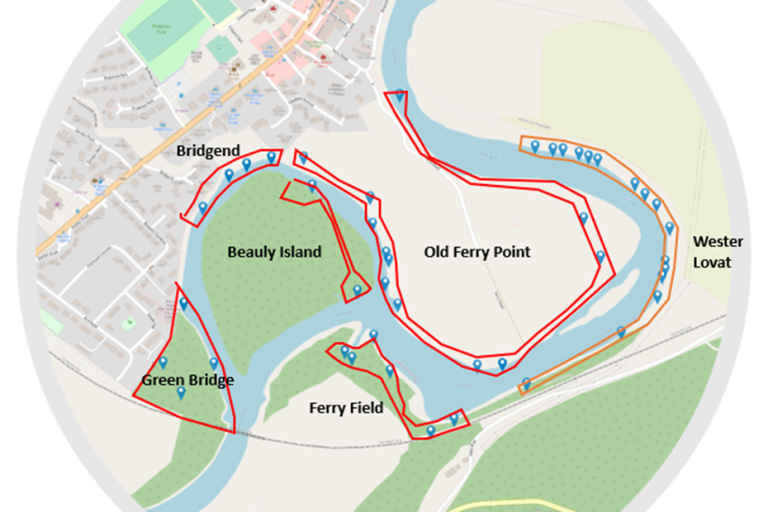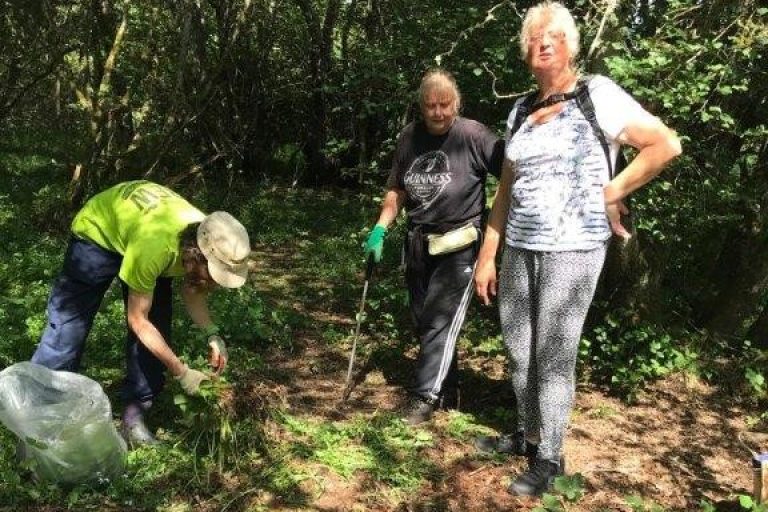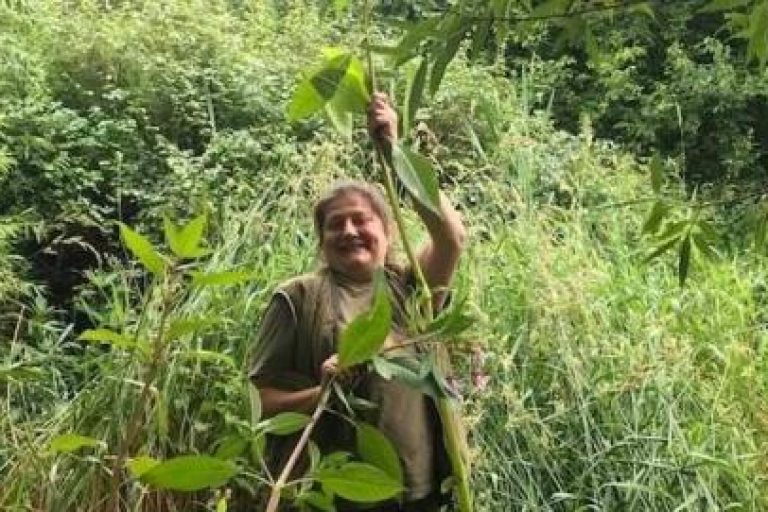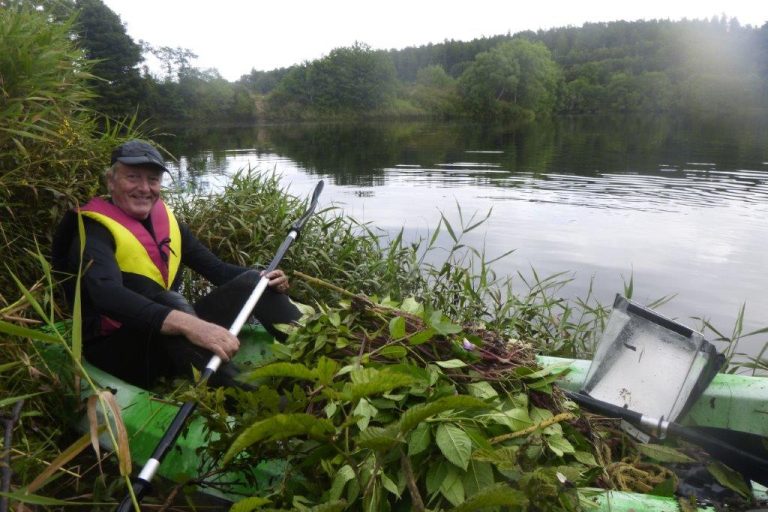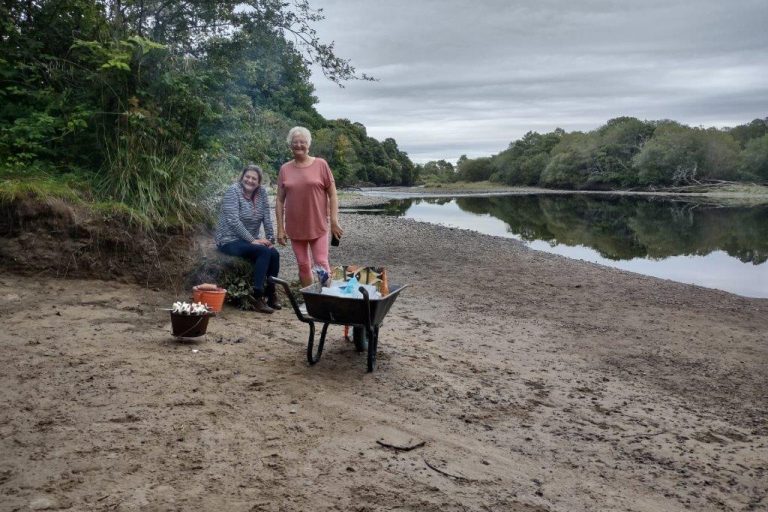Summary
In response to the need to tackle invasive Himalayan balsam on the lower River Beauly catchment the Beauly Fishery Board worked with local land managers and community volunteers to set up the ‘Beauly Balsam Bashers’ – a volunteer-led group, working under the guidance of the Fishery Board.
The group had a successful first year of action in 2021 and tackled all the priority areas earmarked for Himalayan balsam control, surveyed the lower catchment for invasive plants and made plans for work in 2022.
Background
Himalayan balsam grows on the banks of the Lower River Beauly and on a few tributary burns in the lower catchment where it dominates and shades out native plants causing biodiversity loss. It also destabilises the banks leading to soil erosion in the winter when the annual plant dies back – this released silt enters the water and can smother valuable freshwater habitat.
To tackle the Himalayan balsam problem the Beauly Fishery Board, a delivery partner in the Scottish Invasive Species Initiative, initiated a project in early 2021 to work with the local land manager, Lovat Estates, and community volunteers to take coordinated and cohesive action.
Action taken
An initial meeting was organised at the start of the year with Lovat Estates, the Beauly Eco-Friends group and any local people keen to get involved. A number of people committed to the project and the ‘Beauly Balsam Bashers’ was formed. Two volunteers – Steve and Niki – were nominated to lead and help co-ordinate the group.
Locations of Himalayan balsam were identified and volunteers adopted specific sites to focus their balsam removal efforts upon (See Figure 1). Other key landowners were contacted and gave permission for Himalayan balsam pulling to occur on their land.
When the Himalayan balsam started to grow the ‘balsam bashers’ were off! They went out hand pulling balsam all along the lower Beauly – in pairs or by themselves where it was safe to do so (Figures 2 and 3). To help get things going and to ensure that work was co-ordinated and effective lead volunteer Niki put out markers to highlight to volunteers where to go.
